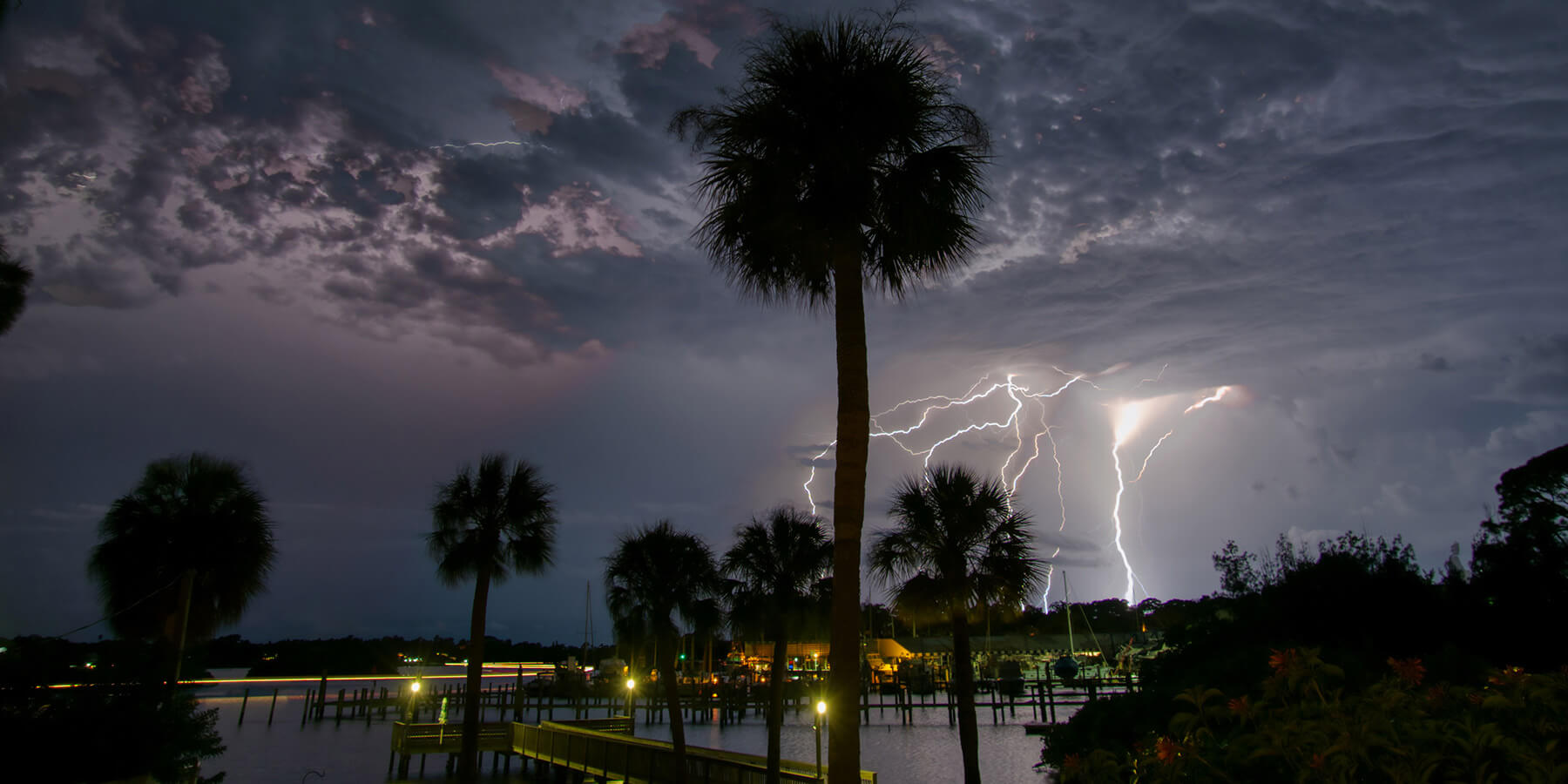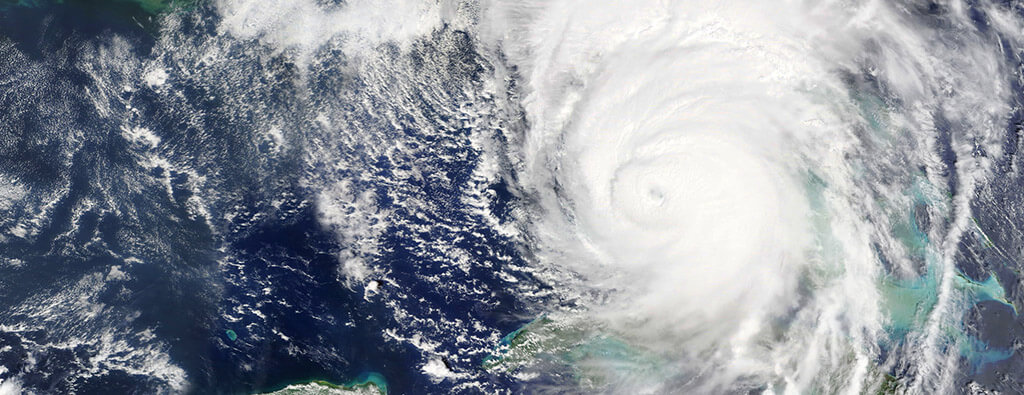Florida’s hurricane season is a time of heightened activity for residents and organizations, requiring preparation, vigilance, and resilience.
Florida faces significant risks each year as the most hurricane-prone state in the U.S.
Understanding the timing, hazards, and necessary precautions can make a crucial difference in ensuring safety and minimizing damage.
We will cover when hurricane season occurs, what to expect in 2025, and actionable steps for preparation.
Hurricane Season in Florida
Hurricane season in Florida officially runs from June 1 to November 30, with peak months typically between August and October.
This period coincides with warm ocean temperatures and atmospheric conditions necessary for storm formation.
While not every year brings catastrophic hurricanes, even minor storms can disrupt daily life and cause extensive property damage.
Historical Hurricane Patterns
- According to the National Hurricane Center, August and September account for over 70% of hurricane activity in Florida.
- Since 1851, Florida has been directly hit by more than 120 hurricanes, making it the state with the highest landfall rate in the U.S.
What to Expect for the 2025 Florida Hurricane Season
Meteorologists are already analyzing weather patterns and ocean temperatures to predict what Florida might face in 2025.
Early forecasts from Colorado State University (CSU) and the Climate Adaptation Center (CAC) predict an active hurricane season, with several factors that could influence the season’s activity:
- El Nino and La Nina Cycles: These weather phenomena can increase or suppress hurricane activity depending on the phase.
- Rising Ocean Temperatures: Warmer water in the Atlantic fuels stronger storms.
- Early Predictions for 2025: Early models suggest the possibility of an above-average hurricane season, similar to recent years.
Preparing for the Florida Hurricane Season in 2025

Preparing for hurricane season in advance is essential to protect lives and property.
Here are a few tips for getting prepared ahead of this year’s hurricane season:
- Assemble an Emergency Kit: Stock food, water, medications, flashlights, batteries, and other supplies to sustain your household for at least 72 hours.
- Review Insurance Coverage: Verify that your insurance policy includes flood and wind damage coverage to mitigate financial losses.
- Develop a Communication Plan: Create a family emergency plan detailing evacuation route, meeting points, and key contacts.
- Monitor Weather Updates: Stay informed through trusted sources like the National Hurricane Center and local news outlets.
- Harden Your Home: Install storm shutters, reinforce roofs, and secure outdoor items to minimize potential damage from high winds and debris.
You can find more helpful tips for emergency preparedness at our Hurricane Resource Center.
Creating an Emergency Kit
An emergency kit should contain enough supplies to last at least 72 hours.
Some things to include are:
- Non-perishable food and bottled water (one gallon per person per day)
- Flashlights and extra batteries
- A NOAA weather radio
- First-aid supplies
- Essential medications
- Important documents in waterproof containers
Evacuation Planning for Coastal Communities
Coastal counties in Florida, such as Miami-Dade and Monroe, face heightened risks during hurricanes due to their proximity to the ocean. A well-defined evacuation plan, including mapped routes and identified shelters, is essential for safety.
During Hurricane Irma in 2017, early evacuation orders helped safeguard thousands of residents. The state issued evacuation orders covering a record 6.8 million residents, showcasing how important timely communications and evacuations are in disaster response.
Mitigating Hurricane Damage
Mitigation efforts can reduce the impact of hurricanes on homes and communities.
Consider these strategies:
- Home Improvements: Install impact-resistant windows, reinforce garage doors, and secure loose outdoor items.
- Flood Mitigation Measures: Elevate electrical systems and use sandbags to redirect water flow.
- Insurance Review: Ensure coverage includes hurricane and flood insurance, as standard homeowner policies typically don’t cover flood damage.
Roles of Local Governments During Hurricane Season in Florida
Local governments and organizations in Florida play a vital role in supporting their communities during hurricane season.
Here are some ways they can prepare and respond effectively:
Pre-Disaster Planning
- Conduct a risk assessment to identify vulnerabilities.
- Develop a continuity of operations plan to maintain services during a disaster.
- Train employees in emergency procedures through regular drills.
Response Efforts
- Set up emergency communication protocols to keep stakeholders informed.
- Coordinate with law enforcement and community partners to assist in disaster response.
Tools and Resources for Hurricane Season

- National Hurricane Center (NHC): Access real-time storm tracking, forecasts, and updates to stay informed about developing weather systems.
- FEMA App: Stay prepared with weather alerts, emergency tips, and a disaster kit checklist conveniently available on your mobile device.
- Florida Division of Emergency Management (FDEM): Explore state-specific resources and guidance for hurricane preparation and response efforts.
Storm Surge Mapping
FDEM employs advanced mapping technology to predict storm surge impacts, aiding residents in high-risk areas to understand their vulnerability.
FDEM’s interactive storm surge maps provide detailed information on potential flooding zones, assisting in evacuation planning and risk assessment.
Challenges of Florida’s Hurricane Season
- Rapid Storm Development: Hurricanes such as Michael in 2018 intensified quickly, reducing the window for preparation and evacuation and putting residents at greater risk.
- Flood Risks: Florida’s low-lying geography and extensive coastline make it highly prone to severe flooding during storms, impacting both urban and rural areas.
- Infrastructure Strain: Power outages, road closures, and damaged utilities disrupt recovery efforts, delaying aid and compounding the challenges for affected communities.
It’s important to stay alert by monitoring updates from reliable sources like NOAA and FDEM. To prepare for potential outages, make sure you have a backup power source, such as a generator.
Additionally, plan multiple evacuation routes to avoid bottlenecks during mass evacuations and ensure a smoother escape if needed.
How Communities Recover After Hurricanes
Recovery after hurricanes is a collaborative process involving local governments, federal agencies, and community organizations working together to rebuild and restore normalcy.
- Restoring Infrastructure: Rebuilding essential infrastructure like roads, bridges, and utilities is a primary focus to restore connectivity and public services.
- Providing Aid to Affected Residents: Federal agencies like FEMA deliver disaster relief programs, including temporary housing, financial assistance, and access to recovery resources for impacted families.
- Mitigating Future Risks: Communities use the recovery phase to adopt stronger building codes, improve land-use planning, and implement flood control measures to reduce vulnerability to future storms.
How Communities Recover After Hurricanes
After Hurricane Michael in 2018, Florida communities invested in flood-resistant infrastructure, such as elevating buildings and enhancing stormwater management systems, to mitigate damage from future storms.
These efforts have been supported by federal funding, including FEMA’s Hazard Mitigation Grant Program.
Staying Safe in Florida During 2025’s Hurricane Season
Preparation and vigilance are key to weathering the challenges of Florida’s hurricane season. Whether you’re a resident, organization, or emergency management professional, taking proactive steps can mitigate risks and save lives.
Reach out to us to learn more about hurricane preparedness and related resources.



